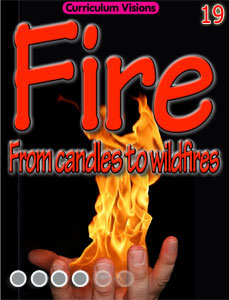A smell is a gas that we can detect with our noses. Toast, and other materials that are made very hot so that they carbonise the material and give off gases and tiny solid particles, is said to be charred. Smoke gases of this kind may be white, grey or black.
Charred living material, such as plants or meat, produces special chemicals (if you really want to know, scientists call them polycyclic aromatic hydrocarbons – PAHs). These are normally destroyed in a flame, and flames do not produce smells.
The PAHs are tiny solid particles. We can smell even small amounts of these charring gases because our brains know they are poisonous in large amounts, and can also cause cancer. We also know that smoke can be a sign of a fire, and so we think of smoke as a danger sign. In barbecuing, charring smells are normally mostly trapped by the fat in the food, so we hardly smell them.
If a material is dry and it gets too hot, like burned toast, but not hot enough to make a flame, many PAH particles are given off and carried upwards by hot air. However, in this case, they do not get trapped by the food because it is fat free and dry. These smoke gas particles are small enough to be carried quickly across a room, and they easily get trapped in curtain fabrics, in clothes and even stick to the paint on the walls.
Carried by gases, smoke spreads evenly through the air. So after you have thrown the burnt toast away the smoke particles on the walls, in the curtains and on your clothes are still there. But now they are more concentrated on fabrics and walls than in the rest of the room, so they gradually evaporate into gases, leaving the fabrics and moving into the air. Some of these enter our noses, so we keep on detecting a burnt smell. This can carry on for hours, until the amount is so low our noses cannot sense them any more.
Other charring dry materials are the same – that is why cigarette smoke lingers for ages, and why people who have been smoking carry the smell of the smoke about with them.




